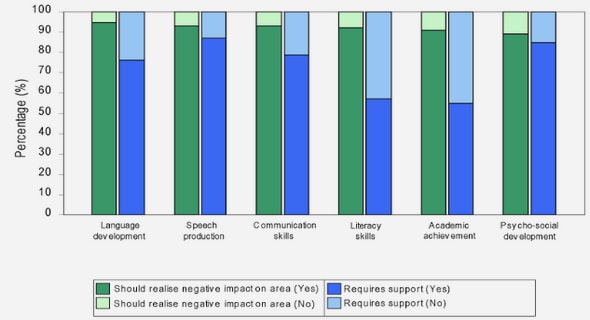(Downloads - 0)
For more info about our services contact : help@bestpfe.com
Table of contents
Chapter 1- General Introduction
1.1 The global story of phosphorus
1.1.1 Why do we study phosphorus?
1.1.2 The global challenge of P resources
1.1.3 The P dilemma: too much vs. too little
1.2 P losses to waters: point vs. diffuse sources
1.3 Knowledge and research trends on diffuse P loss processes
1.3.1 The need for an integrated catchment approach
1.3.2 Some key concepts about P mobilization processes in agricultural catchments
1.3.3 Are dissolved and colloidal P species major components of diffuse P losses in agricultural landscapes?
1.3.4 Riparian buffer zones as potential sources of dissolved and colloidal P agricultural catchments
1.4 The long-term Kervidy-Naizin observatory: an ideal site for unravelling dissolved and colloidal phosphorus losses in agricultural catchments
1.5 General objectives and organization of the thesis
Chapter 2 Groundwater control of biogeochemical processes causing phosphorus release from riparian wetlands
2.1 Introduction
2.2 Materials and Methods
2.2.1 Study sites
2.2.2 Soil and water sampling
2.2.3 Soil and water chemical analyses
2.3 Results and discussion
2.3.1 Soil P content and water table depths in riparian wetlands
2.3.2 Groundwater level controls P release in riparian wetlands
2.3.3 Linking MRP concentration in riparian wetlands and in the stream
2.4 Conclusion
Acknowledgement
References
2.5 Supplementary materials
2.6 Conclusion of chapter 2
Chapter 3 Release of dissolved phosphorus from riparian wetlands: Evidence for complex interactions among hydroclimate variability, topography and soil properties
3.1 Introduction
3.2 Materials and Methods
3.2.1 Research site
3.2.2 Soil and water sampling
3.2.3 Soil and water chemical analysis
3.3 Results
3.3.1 Hedley P fractionation
3.3.2 Rainfall, discharge and water-table variations
3.3.3 Soil water chemistry
3.3.4 Stream water chemistry
3.4 Discussion
3.4.1 Influence of soil P content and soil P speciation
3.4.2 Key influence of interannual hydroclimatic variability on P release dynamics
3.4.3 Topography as the potential ultimate driver of dissolved P release in RW soils
3.4.4 Delivery and retention of mobilized P
3.5 Conclusions
Acknowledgements
References
3.6 Supplementary materials
3.7 Conclusion of chapter 3
Chapter 4 Drying/rewetting cycles stimulate release of colloidal-bound phosphorus in riparian soils
4.1 Introduction
4.2 Materials and Methods
4.2.1 Soil properties and preparation
4.2.2 Experimental setup and conduct of DRW experiments
4.2.3 Leachate treatments
4.2.4 Chemical analysis
4.2.5 UF data treatment
4.2.6 Statistical analysis
4.3 Results
4.3.1 P and DOC concentrations in RF samples
4.3.2 UF leachate results
4.4 Discussion
4.4.1 Soil rewetting stimulates release of colloidal P
4.4.2 Co-existence of physically- and biologically-driven P release during rewetting
4.4.3 Influence of soil properties
4.4.4 Linking sources and production mechanisms of P forms released during soil rewetting
4.4.5 Environmental and ecological implications
4.5 Conclusions
Acknowledgements
References
4.6 Supplementary materials
4.7 Conclusion of chapter 4
Chapter 5 Release of dissolved phosphorus upon reduction of wetland soils: a laboratory study of the respective roles of soil Fe-oxyhydroxides dissolution, pH changes, sediment inputs and soil phosphorus speciation
5.1 Introduction
5.2 Materials and methods
5.2.1 Sampling sites and soil preparation
5.2.2 Experimental setup
5.2.3 Analyses
5.3 Results
5.3.1 Soil/sediment composition
5.3.2 Anaerobic incubations of RW soils
5.3.3 Aerobic incubations of RW soils
5.3.4 Anaerobic incubations of sediment with and without RW soil addition
5.4 Discussion
5.4.1 Controls of soil properties on concentration and speciation of released DP
5.4.2 Assessing the respective roles of reductive dissolution of Fe-oxyhydroxides and pH rise
5.4.3 Influence of sediment deposition in RWs on DP release under anoxic conditions
5.5 Conclusions
Acknowledgements
References
5.6 Supplementary materials
5.7 Conclusion of chapter 5 (laboratory simulation of reduction processes)
Chapter 6 General conclusions
6.1 Recall of thesis objectives
6.2 Summary of conclusions
6.2.1 Constraints from field monitoring on the mechanisms and factors causing DP releases in riparian wetlands
6.2.2 Highlighting how drying-wetting cycles stimulate the release of colloidal P in wetland using column leaching experiments
6.2.3 Constraints on the processes releasing P under anoxic conditions
6.3 Possible implications for management
6.4 Perspectives
6.4.1 Nature, source and significance of organic P fraction
6.4.2 Towards a better characterization of colloid composition and colloid properties regarding P transfer in soils
6.4.3 Test the generality of the conceptual model developed from the Kervidy- Naizin catchment
Chapter 7 General references




